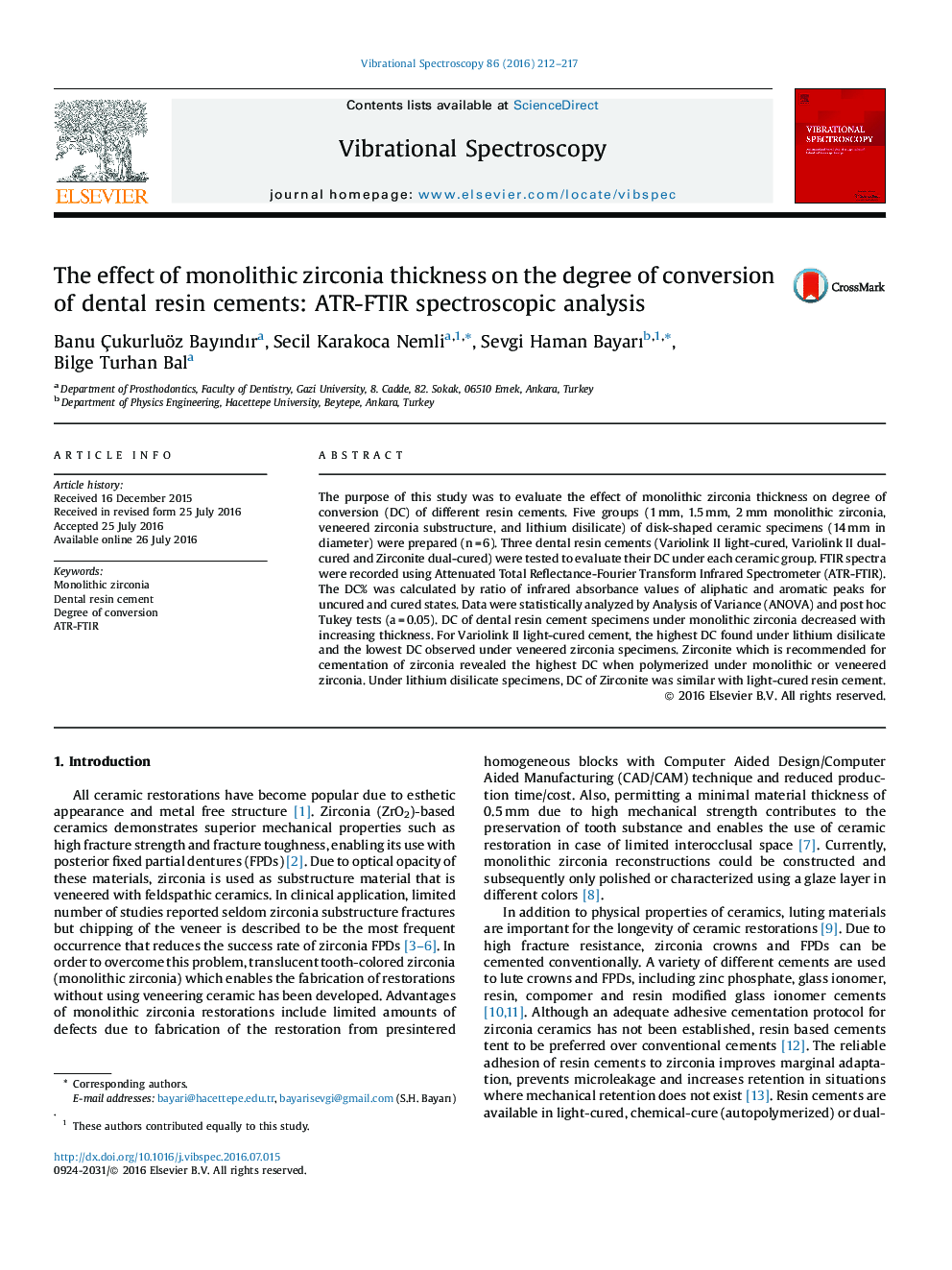| Article ID | Journal | Published Year | Pages | File Type |
|---|---|---|---|---|
| 1249522 | Vibrational Spectroscopy | 2016 | 6 Pages |
The purpose of this study was to evaluate the effect of monolithic zirconia thickness on degree of conversion (DC) of different resin cements. Five groups (1 mm, 1.5 mm, 2 mm monolithic zirconia, veneered zirconia substructure, and lithium disilicate) of disk-shaped ceramic specimens (14 mm in diameter) were prepared (n = 6). Three dental resin cements (Variolink II light-cured, Variolink II dual-cured and Zirconite dual-cured) were tested to evaluate their DC under each ceramic group. FTIR spectra were recorded using Attenuated Total Reflectance-Fourier Transform Infrared Spectrometer (ATR-FTIR). The DC% was calculated by ratio of infrared absorbance values of aliphatic and aromatic peaks for uncured and cured states. Data were statistically analyzed by Analysis of Variance (ANOVA) and post hoc Tukey tests (a = 0.05). DC of dental resin cement specimens under monolithic zirconia decreased with increasing thickness. For Variolink II light-cured cement, the highest DC found under lithium disilicate and the lowest DC observed under veneered zirconia specimens. Zirconite which is recommended for cementation of zirconia revealed the highest DC when polymerized under monolithic or veneered zirconia. Under lithium disilicate specimens, DC of Zirconite was similar with light-cured resin cement.
